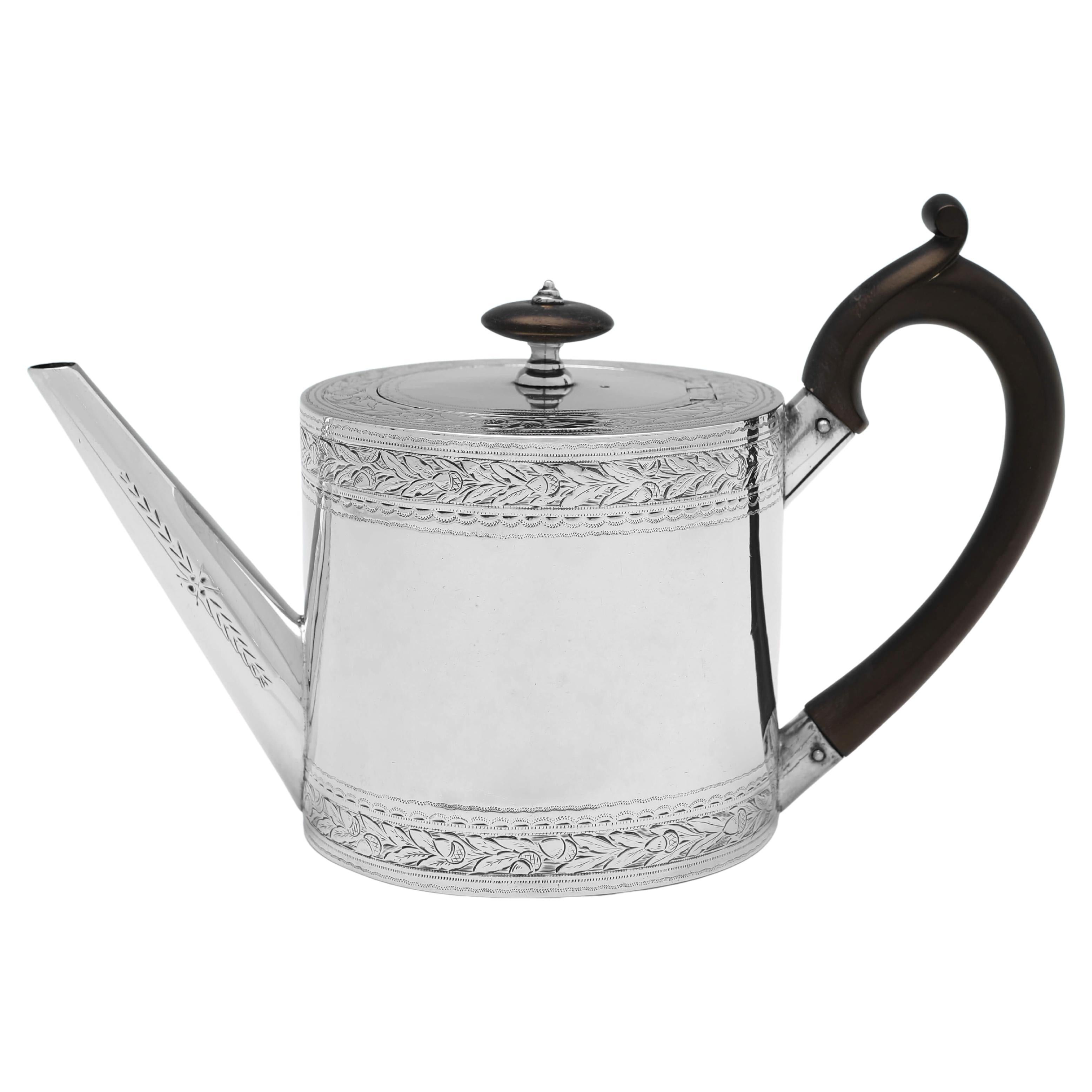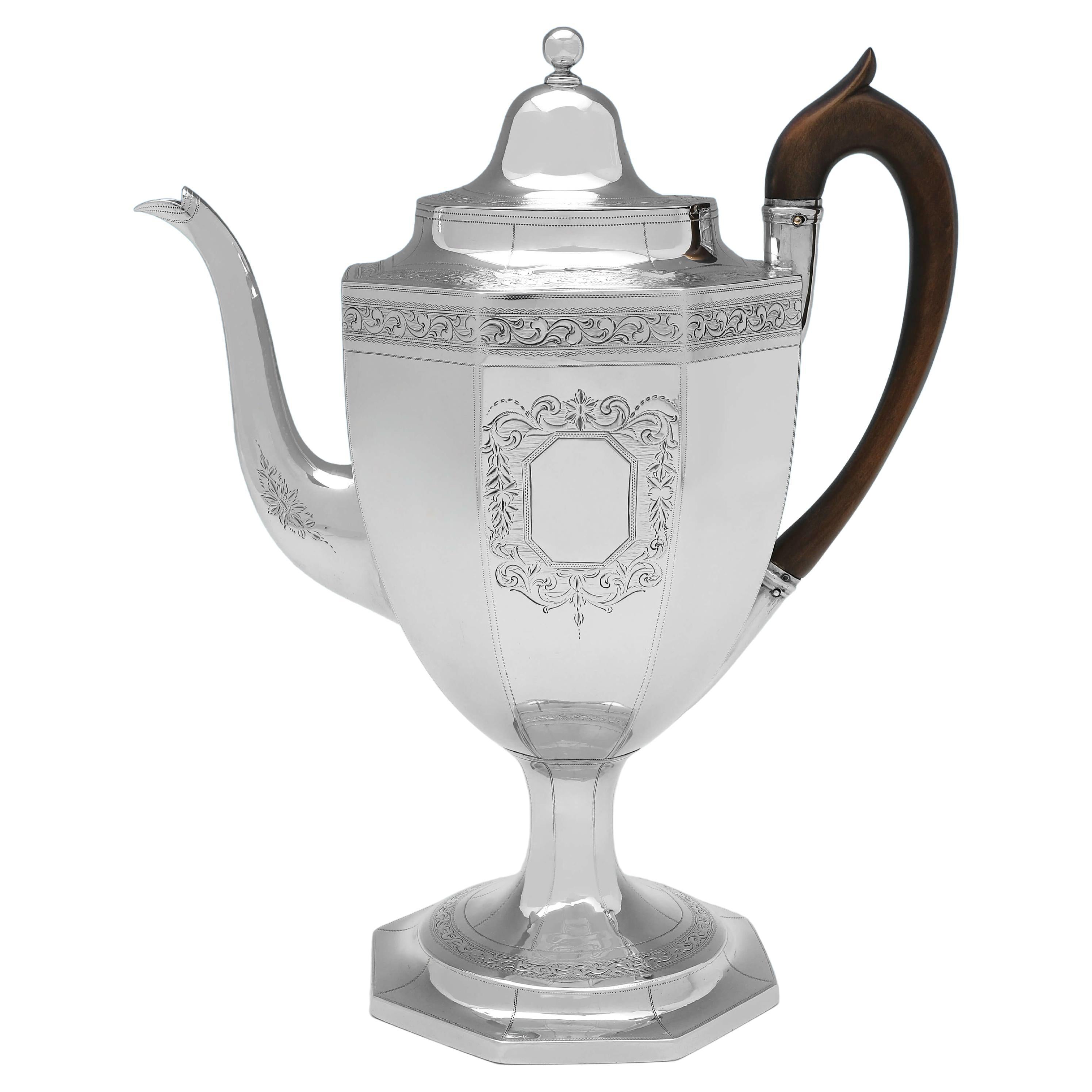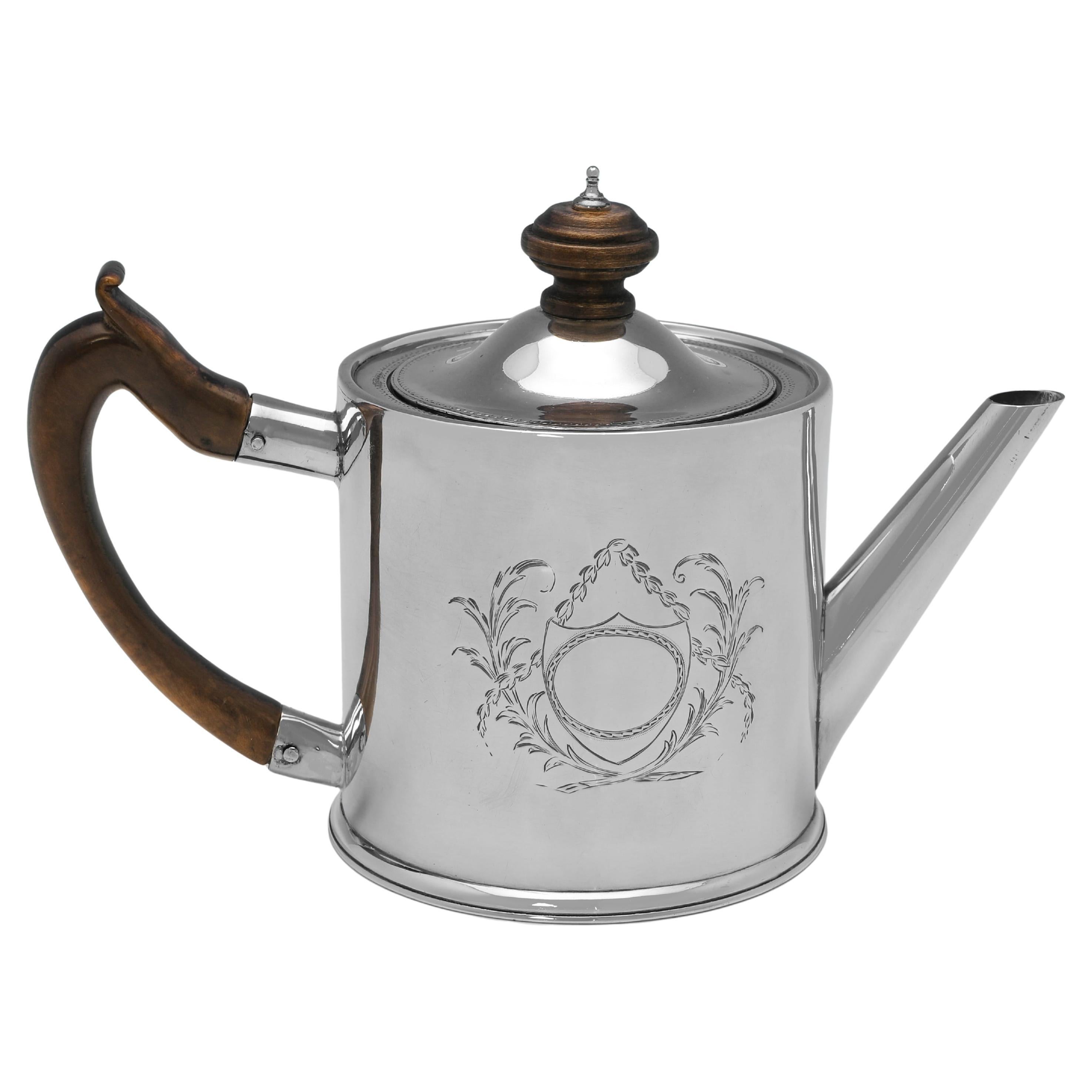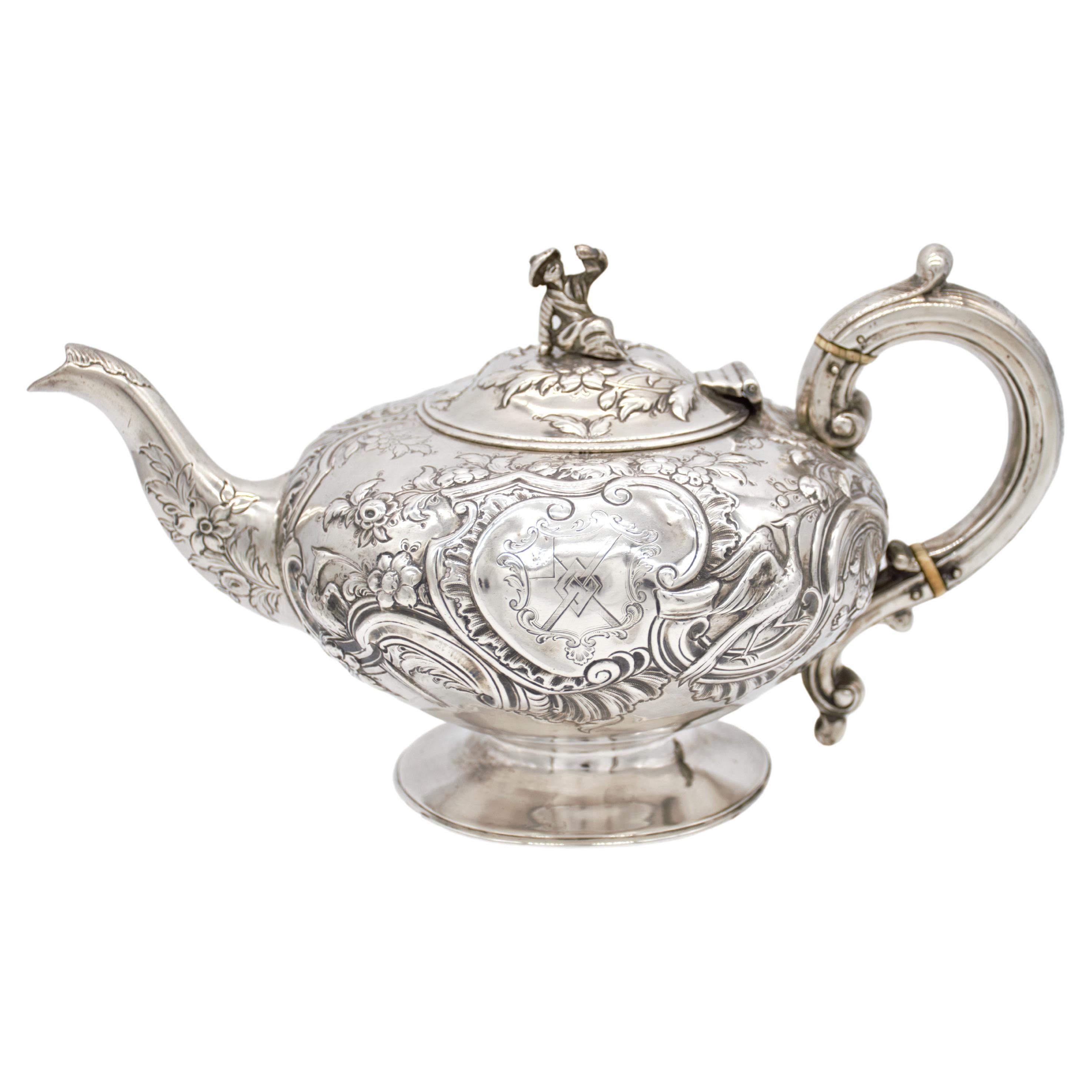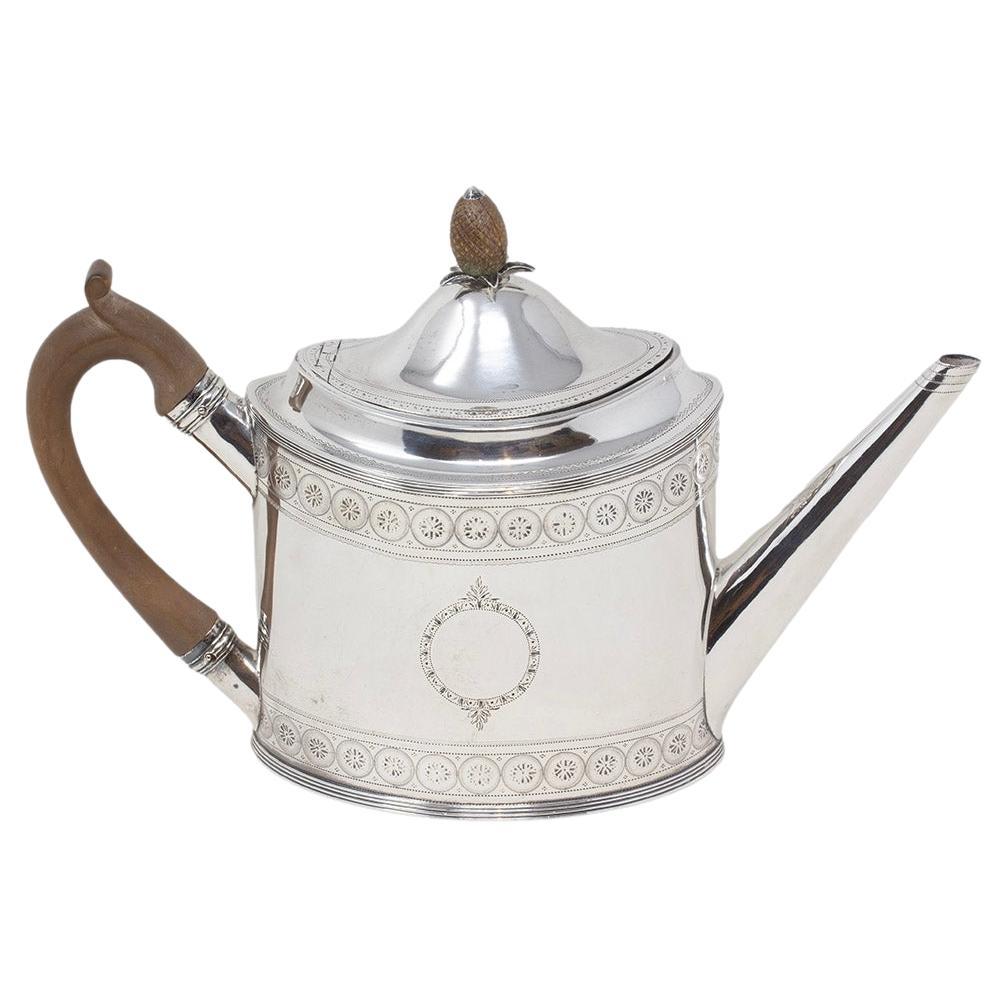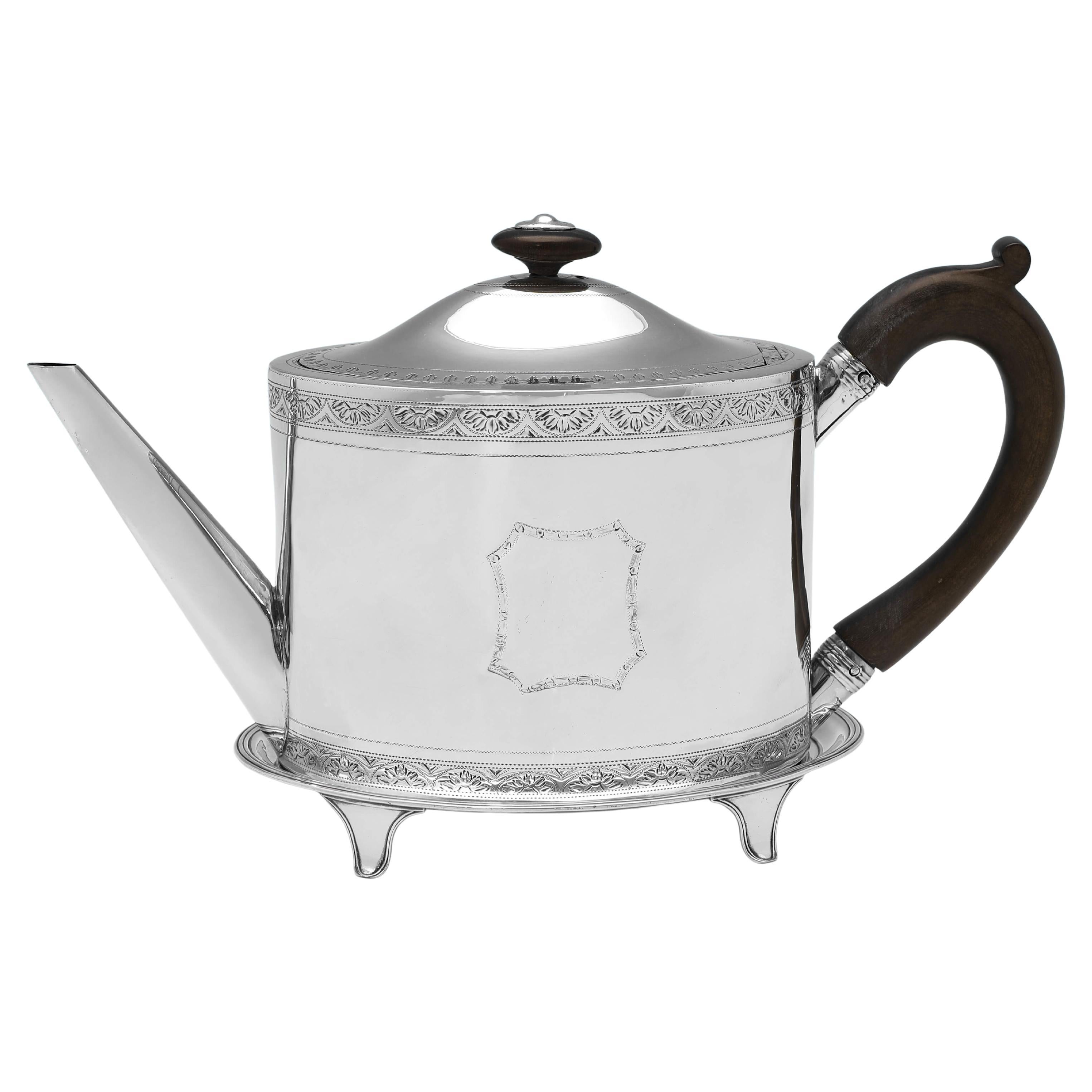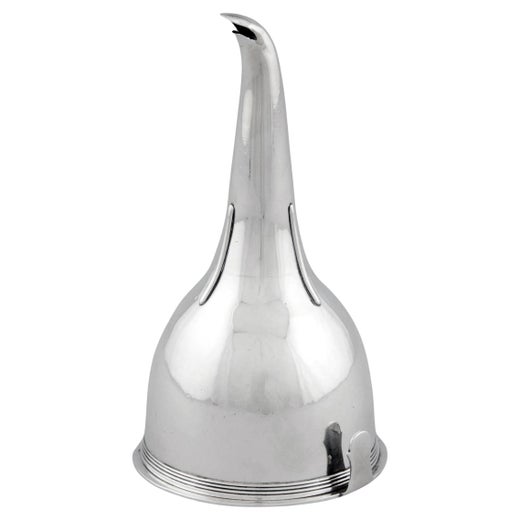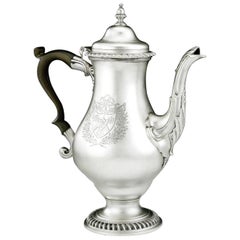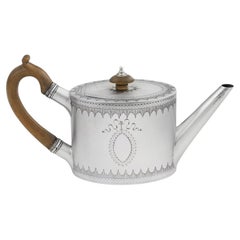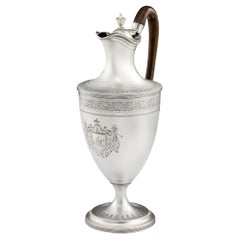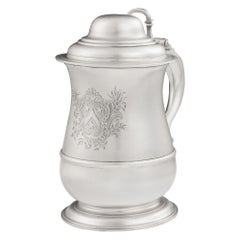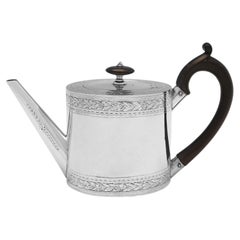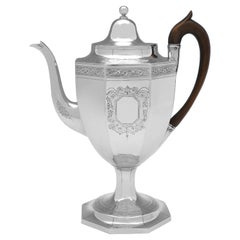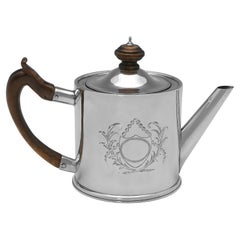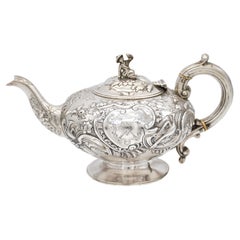George III Combination Argyle/Teapot Made in London in 1805 by John Emes
About the Item
- Creator:John Emes (Maker)
- Dimensions:Height: 6.75 in (17.15 cm)Width: 8.1 in (20.58 cm)Depth: 3.5 in (8.89 cm)
- Style:George III (Of the Period)
- Place of Origin:
- Period:
- Date of Manufacture:1805
- Condition:Wear consistent with age and use.
- Seller Location:London, GB
- Reference Number:1stDibs: LU978134810532
John Emes
John Emes was a British engraver and watercolor painter. Emes was born on December 30, 1762, to William Emes, a landscape gardener from Mackworth near Derby. He is best known for his engraving of the picture by James Jeffreys, The Destruction of the Spanish Batteries before Gibraltar. The etching for this is dated 1786 and it was published in October 1789 by Emes and Elizabeth Woollett, the widow of William Woollett. Emes was also a watercolor painter and executed tinted drawings of views in the Lake District and elsewhere, some of which he exhibited at the Royal Academy in 1790 and 1791. There are three watercolor drawings by Emes in the Print Room at the British Museum. One of them is a large drawing representing The Meeting of the Royal Society of British Archers in Gwersyllt Park, Denbighshire, the figures in this are drawn by Robert Smirke RA and it was afterward engraved in aquatint by Cornelis Apostool. A set of sixteen views of the lakes in Cumberland and Westmorland, drawn by John Smith and John Emes, were engraved in aquatint by Samuel Alken and these were incorporated into Thomas West's, Guide to the Lakes. Emes also engraved some views of Dorsetshire. His collection of prints was sold on March 22, 1810, after his death.
- ShippingRetrieving quote...Shipping from: London, United Kingdom
- Return Policy
More From This Seller
View AllAntique Late 18th Century English George III More Dining and Entertaining
Silver
Antique 18th Century English George III Platters and Serveware
Silver, Sterling Silver
Antique 1790s English George III Pitchers
Sterling Silver
Antique 18th Century English George II Barware
Silver, Sterling Silver
Antique 18th Century English Neoclassical Urns
Silver
Antique 18th Century English Neoclassical Pitchers
Silver, Sterling Silver
You May Also Like
Antique 1790s English George III Sterling Silver
Sterling Silver
Antique Early 1800s English George III Sterling Silver
Sterling Silver
Antique 1770s English George III Tea Sets
Sterling Silver
Antique 1790s English Neoclassical Tea Sets
Silver
Antique Late 18th Century English George III Sterling Silver
Silver, Sterling Silver
Antique 1790s English George III Sterling Silver
Sterling Silver
